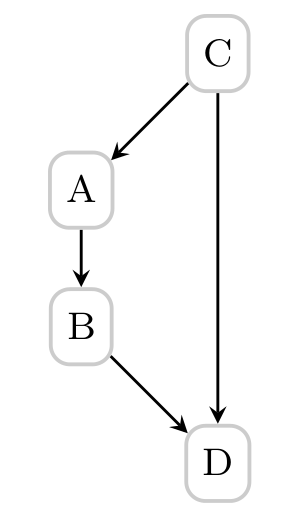Greedy Thick Thinning¶
This learning algorithm uses the Greedy Thick Thinning procedure. It is a general-purpose graph structure learning algorithm, meaning it will attempt to search the full space of graphs for the best graph.
The probability tables are filled out using Expectation Maximization.

Parameters¶
type LearnParams_GreedyThickThinning
maxparents :: Int # limits the maximum number of parents a node can have
priors :: Int # either K2 or BDeu
netWeight :: Float64 # for BDeu prior it defines the weight for the uniform prior
forced_arcs :: Vector{Tuple} # a list of (i->j) arcs which are forced to be in the network
forbidden_arcs :: Vector{Tuple} # a list of (i->j) arcs which are forbidden in the network
tiers :: Vector{Tuple} # a list of (i->tier) associating nodes with a particular tier
LearnParams_GreedyThickThinning() = new(5, DSL_K2, 1.0, Tuple[], Tuple[], Tuple[])
end
Examples¶
net = Network()
learn!( net, dset, LearnParams_GreedyThickThinning())
Algorithm¶
The Greedy Thick Thinning algorithm starts with an empty graph and repeatedly adds the next arc which maximizes the Bayesian Score metric until a local maxima is reached. It then removes arcs untils a local maxima is reached.
The algorithm is thus fairly efficient at the expense of being prone to being trapped in local maxima.
Two priors can be used. The BDeu prior ensures equal scoring across Markov equivalance classes. The K2 prior is constant across all variables and is typically used for maximizing  when searching the space of graphs directly.
when searching the space of graphs directly.
Reference¶
Hesar, A. and Tabatabaee, H. and Jalali, M. (2012). Structure Learning of Bayesian Networks Using Heuristic Methods.